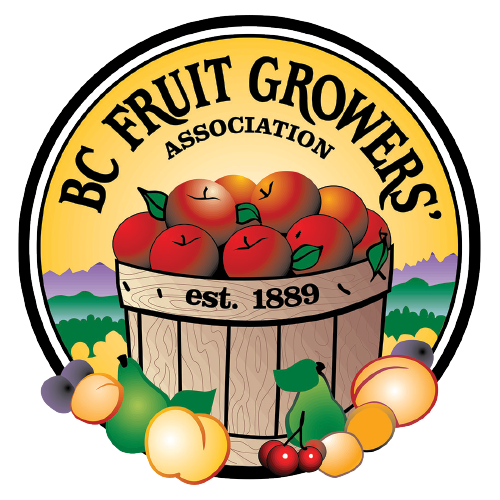Chronicle: 1988
A fruitful century

Farm credit will continue to be an issue. The main question is whether the Farm Credit Corporation will be able to develop an affordable loan program . . . with an eight per cent interest rate or less.
If it cannot, will the provincial government [of British Columbia] develop a program of its own, such as Ontario and other provinces have done?
(David Hobson, new B.C. Federation of Agriculture president and B.C.F.G.A. vice-president.)
- A specially struck Membership Committee which included Gerald Geen, B.C.F.G.A. President, presented its report to the Annual Convention. It noted that a major function of the B.C.F.G.A. was to lobby government on behalf of the tree fruit growers. Between 1983 and 1988, the B.C.F.G.A. had made financial gains for and spoken on behalf of all B.C. tree fruit growers whether they were B.C.F.G.A. members or not. Included in negotiations were programs concerning federal stabilization monies, A.R.D.S.A., the Advance Payments for Crops Act, provincial Grower Loans, A.L.D.A., crop insurance, and apple tri-partite stabilization. The Committee went on to recommend that membership criteria should no longer rest on a marketing contract with B.C. Tree Fruits Ltd., but instead should be open to all tree fruit producers. It further recommended that a new organization be formed: the British Columbia Tree Fruit Producers Association, which would retain ownership of B.C. Tree Fruits Ltd. The B.C.F.G.A. membership rejected these recommendations.
- The 1988 Report of the Executive to the B.C.F.G.A. Annual Convention noted that agricultural commodities which were not in trouble were those with supply management systems. The B.C. tree fruit industry did not have such a system in place. Concern was also expressed over the damage that Free Trade could cause to B.C.’s soft fruit industry.
- Premier Vander Zalm and John Savage, the provincial Minister of Agriculture, told the B.C.F.G.A. that F.I.I. would be in place for the 1988-1989 fiscal year. However, it would be subject to annual review by the provincial government. Possible withdrawal of F.I.I. was a cause of concern to the B.C.F.G.A. Executive.
- The Executive of the B.C.F.G.A. pointed out that the F.I.I. program did not respond to demonstrated need as effectively as it should. Therefore, the long term survival of the growers and the entire tree fruit industry was placed in jeopardy. B.C.F.G.A. leaders thought F.I.I. should work as a true insurance program with the amount paid to the grower relating to the degree of hardship experienced, rather than having government and producers simply sharing the loss.
- The provincial government decreed that, starting in 1988, F.I.I. was to be targeted more towards the commercial producer. Qualification levels would also be raised.
- The western tented leaf miner threatened B.C. orchards.
- Low prices were received for Red Delicious apples, which made up 45 per cent of the Okanagan crop. There were four main reasons: a huge North American crop; an insufficient amount of storage space for the Okanagan crop; the largescale dumping of American apples on the Canadian market; and the loss of the Taiwan market.
- Red Delicious growers, in particular, could not pay their operating loans in the spring. Bankers were reducing or turning down requests for 1988 operating loans. Therefore, Red Delicious growers were facing bankruptcy unless further government assistance was forthcoming.
- In April, B.C.RG.A. President, Gerald Geen, and Martin Linder, of B.C. Tree Fruits Ltd., presented two seminars to bankers to make them more aware of the varied and somewhat complex financial programs in which orchardists were involved.
- In May, the provincial government made an extraordinary grant of two cents a pound for Red Delicious apples, which was later confirmed to be in addition to normal F.I.I. payments.
- The federal government also made an extraordinary grant of two cents a pound for Red Delicious apples, which was in addition to regular tri-partite stabilization payments.
- Despite extra provincial and federal government grants for Red Delicious apples, growers only made 60 per cent of their production costs on that variety.
- The federal government announced stabilization payments for the 1987 sour cherry, peach, pear and prune crops.
- There was a complaint made by the Canadian Horticultural Council (of which Gerald Geen was an officer) that American growers were dumping their apples in Canada at a price below the cost of production in the United States.
- In June, a University of British Columbia study on the economic efficiency of the B.C. apple marketing system found that there were lower production costs per acre in British Columbia but higher costs per pound than in Washington State. The reason for this was differences in yield due to high density plantings, high quality and product mix in Washington State.







